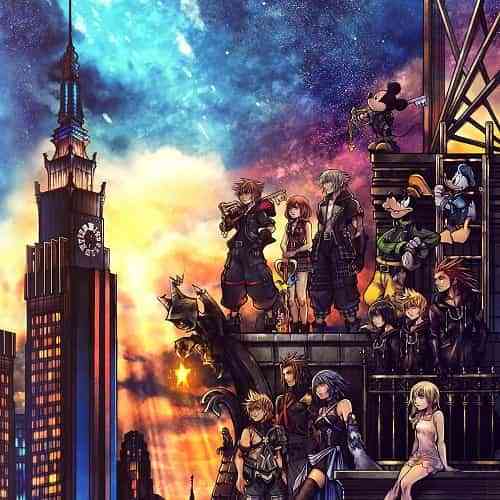♪You’re Only Everything I Ever Dreamed, Ever Dreamed Of♪
Thirteen years ago, I finished Kingdom Hearts 2, put down my controller, and said: “Wow, I can’t wait for Kingdom Hearts 3!” My brother, who is seven years younger than me, asked: “When is that gonna come out?” Knowing nothing about video game development cycles at the time, I jokingly responded with “probably when you’re finishing high school.” Well, I was close. He finished high school two years ago, and Kingdom Hearts 3 is finally here! Sure, we’ve had a plethora of spinoffs and remasters in the interim, but they felt like under-portioned appetizers compared to the main course that fans have been looking forward to. Of course, in those thirteen years since I defeated Organization XIII, things have changed in the world of gaming, as well as within my own perspective. After years of being spoiled by massive open worlds, deep characters, and coherent storylines, can the Kingdom Hearts formula stand the test of time? Let’s find out.
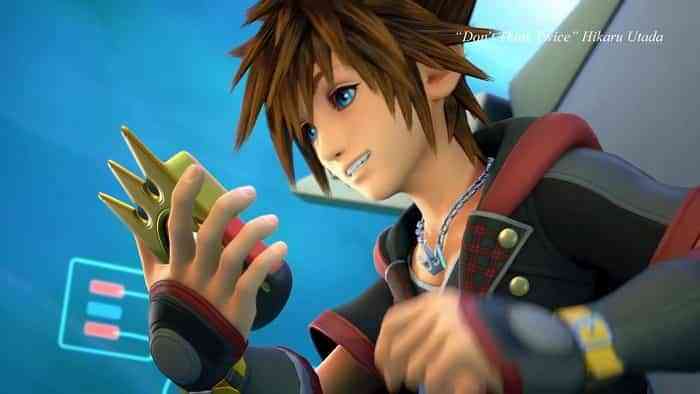
Let’s start with the story. Unless you’re one of the rabid superfans who has dissected each and every title in the series in order to get a hold of what’s happening by the time Kingdom Hearts 3 starts, it’s highly likely that just about everything regarding the main plot will sound like gibberish to you. That’s because it mostly is. Within the first few hours, the game runs itself in circles trying to explain what’s going on, but no matter how barebones they lay it out and visualize it, it’s like an unholy combination between the convoluted plot of Metal Gear Solid and an explanation of off-screen Star Wars lore. If you listen really hard, you might get a glimpse of what exactly is happening, before an edgy teenager in a cloak will beat you over the head with pseudo-philosophical nonsense and swear it’s integral to the plot. But after a little while, the game seems to be in on the joke. Characters sometimes straight up admit that they’re confused too, or get sleepy during long-winded expositional monologues, before the character giving said monologue reveals something that makes the preceding information even more impossible to comprehend. Your best bet is to jump in without taking the plot too seriously, laughing at and with it along the way.

That being said, Kingdom Hearts 3 offers the closest thing to comprehensible human speech in series history, with dialogue reaching genuinely effective and charming heights, but almost exclusively for the game’s main cast during more lighthearted moments. Donald genuinely made me laugh out loud a few times (on purpose!), and there were a couple moments where I genuinely sympathized with Sora, but once it gets into thick plot business, get ready for minutes on end of indiscernible nonsense. Most of the Disney characters dialogue is word for word ripped from their respective films, with a couple notable exceptions that have original storylines, similar to past Kingdom Hearts games. Some of the included characters original voice actors actually reprise their role and the ones that don’t are immediately noticeable, but most of them are passable. The game’s original characters are where the dialogue and voice acting really falls apart into a mess of overwritten sentimentality. But on the bright side, the animation in this game is absolutely phenomenal.
Rapunzel, Rapunzel Let Down Your Hair
Disney characters move exactly the way you would expect them to, partly in thanks to Pixar’s co-operation on the project and the company’s mutual penchants for perfectionism. In some of the worlds that have been translated from 2D to 3D, characters can look a bit like plastic toys even when they’re not supposed to (see Hercules’ hair), but aesthetically it works and still sells that world’s connection to the film it’s based on. Each world has its own cute little details too, like figurines of Herc and Phil in Olympus, or Flynn Rider’s “Wanted” posters in the Kingdom of Corona from Tangled. The developer even goes the extra mile to recreate some fun scenes from the referenced films with Sora and the gang there to witness it first hand, like Rapunzel’s emotional rollercoaster following her emancipation from the tower she’s lived in her whole life, which isn’t exactly new for Kingdom Hearts, but the delivery is much more effective and endearing thanks to the high quality of the animations. There’s one moment in particular around the 13-hour mark that will really drive this point home for a lot of players. Combat animations are as smooth and stylish as ever thanks to a 60fps framerate, though it can buckle under the pressure of rendering some of the more crowded and complex scenes. There’s also a “stable” framerate mode in the game’s configurations, but I personally found that the framerate drops don’t happen enough to justify switching over.
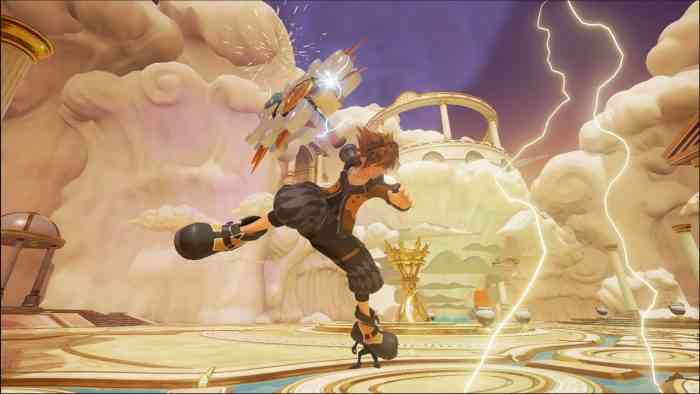
Also, not that it needs reaffirming, but the game’s soundtrack is as phenomenal as ever. Each world has its own beautiful orchestral theme, some of them sampling familiar bits and pieces from the original film’s themes that blend seamlessly into epic battle music as you slide into combat. The new Utada Hikaru tracks are pretty solid too, though Face My Fears is definitely the weaker of the two by a long shot. I applaud the decision to try something new, but Don’t Think Twice is definitely more akin to Simple and Clean and Sanctuary, and probably would have better served the game’s introduction song tonally, even though it doesn’t pack the instrumental punch its predecessors do.
The Closer You Get to the Light, the Greater Your Shadow Becomes
Speaking of introductions, the game wastes no time pulling at your most nostalgia-infused heartstrings. Early flashbacks to previous titles show how far the series has come graphically before fully submerging you in modern-era high definition visuals and the opening tutorial will look very familiar to anyone who has played past entries in the series. Though, it would have been nice if the tutorial covered a bit more right off the bat as opposed to interrupting gameplay with a screen full of text explaining something that I could easily figure out myself for the rest of the entire game. There’s a wide range of attacks that are mostly attached to two buttons – there are the traditional attack and magic assigned to the command menu, and then everything else attached to another button, which is both a blessing and a curse.
Keyblade transmogrifications, team-up attacks, attraction attacks and ‘interact’ are all mapped to the same damn button, and on more than one occasion, you’ll press it meaning to do one thing and end up doing something completely different. This is a long-running issue I was hoping would be fixed with this installment, but I often find myself turning into a lightning-striking God on a chariot pulled by Pegasus from Hercules, when all I wanted to do was open a chest. These simplistic controls can be useful during combat though, as it helps keep the player in flow-state by lining up an endless string of useful attacks that help with crowd control and boss fights, and keeps the game true to its identity by igniting an incomprehensible amount of action on-screen at any given time. There’s also a new “Shotlock” system that helps with both travel and attacks, being used to reach tall heights one moment, and build up a multi-strike assault the next. Enemy design tends to lean on the series’ now monolithic catalog of baddies, but the noticeably new ones look great, especially those that are world-specific. Some can equip armor, that breaks and chips away as Sora reigns blows upon them. Additionally, Donald and Goofy don’t feel quite as useless this time around, though there’s still a bit of room for improvement, especially after being spoiled by useful, well-programmed sidekicks from other recent games.
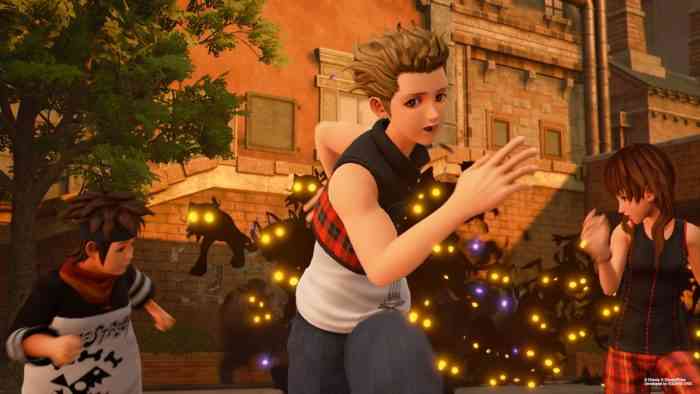
The Gummi ship is back and better than ever in a semi-open galaxy as opposed to the space tunnels of the former titles. It takes a bit of getting used to at first as space battles are often a separate mini-game-esque entity this time around and the proximity for getting into one is unclear, but it’s ultimately a step in the right direction. While flying around, you can take pictures of constellations to unlock new ship blueprints using Sora’s Gummiphone. The Gummiphone is basically a contextual excuse for some new mechanics, like taking pictures and on-the-fly mini-games, but mostly acts as a menu within a menu, storing your glossary, story synopsis, and other informational resources. Taking pictures is easily the most important of these new mechanics due to the fact that you need to take pictures of the 100 Hidden Mickeys strewn about the game to unlock the “secret movie” being patched in on day one. It also lends some context to the unintentionally hilarious loading screens that show characters posts on some sort of Kingdom Hearts version of Instagram, complete with hashtags to show that our heroes are hip kids who know how to use social media.
We May Never Meet Again, But We’ll Never Forget Each Other
There’s also a plethora of minigames to play through, from the Gummiphone’s Game-&-Watch-esque platformer to a pudding-stacking game in each world’s safe zone, to the return of the Hundred Acre Wood. Summons also make their return, bringing in a cast of Disney characters whose worlds “couldn’t make it” for one reason or another. Each keyblade comes with its own set of special attacks and transmogrifications to tear enemies apart with style and can be upgraded through synthesis in the Moogle shop. You can also make meals with Remy from Ratatouille, which grant temporary stat buffs similar to how the meals in Final Fantasy XV work. Spells and items can still be mapped to a shortcut, though the item management, in particular, is still pretty annoying, as you can only equip a select few at a time. Though, when you fall in battle, there’s now additional options to “prepare and retry” or “continue,” which is separate from the standard “retry.”
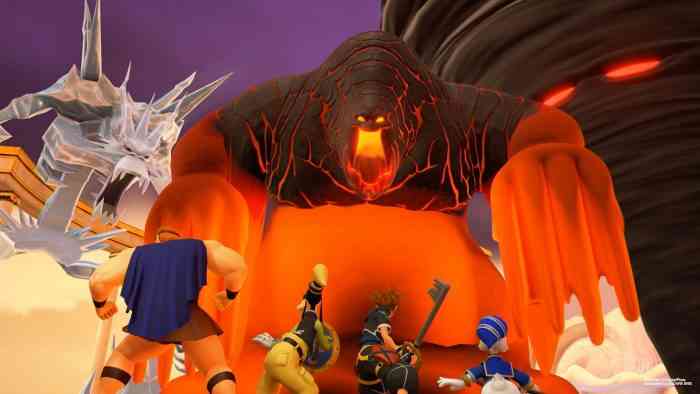
All-in-all, fourteen-year-old me and modern twenty-seven-year-old me are pretty happy with Kingdom Hearts 3. It’s a JRPG cover band of Disney’s greatest hits from the past 30 years and doubles down on everything that gives the series its identity, from over-the-top combat to overly-complex plotlines that make little to no sense. Sora and the gang are as ridiculously optimistic and lovable as ever and the Organization matches them with mid-2000s suburban teenage angst. There’s a sense of finality to it – from the very start, it feels like the end of something epic and carries that feeling throughout the entire game. Superfans are going to be thrilled at every turn and newcomers will appreciate the bizarre, unmatched genre-blend of Disney and anime culture. Kingdom Hearts 3 is still some of the most genuine and wholesome fun I’ve had in thirteen years, and even though to some degree it is more of the same that we’ve seen from past titles with more polish, finesse, and technological magic, but in a way, that’s what makes it feel like home.
***Reviewed on the Xbox One***
The Good
- Exciting Over-the-Top Combat
- Visually Stunning In 60fps
- Genuinely Humorous Dialogue
- Phenomenal Soundtrack
- Strong Gameplay Diversity
- Beautifully Animated
The Bad
- Too Many Tutorial Pop-Ups with Too Much Text
- Some Poor Voice Acting
- Needlessly Convoluted and Stupid Plot
